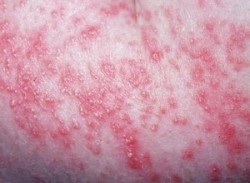A type of fungal infection, yeast infection is caused by the
overgrowth of any of the Candida species in the region of the genitals. For women, it may be called vulvo vaginal yeast infection. It is a type of vaginitis, or inflammation of the vagina, which affects the vagina and vulva. A common type of infection, they do not usually pose serious harm and can be treated easily.
Other Types of Yeast Infection
There are several other types of candidiasis, which are found in the other areas of the body. Symptoms will vary on their location, however, the common denominator among the possible locations is that they are all warm, moist areas in the body.
- Oral candidiasis or thrush
- Occurs when Candida overgrowth occurs in the mouth or throat.
- Diaper rash
- Occurs when the yeast infects the baby’s bottom area.
- Candidiasis or candidemia
- Occurs when the yeast invades the blood
Causes of Yeast Infection
The vaginal area normally contains millions of bacteria and minute amounts of bacteria. They usually cause no harm to the body. But when they multiply to large amounts, this is when yeast infection occurs. The most common type of fungus in yeast infection is Candida albicans. Some of the causes of overgrowth include:
- Certain antibiotics
- High estrogen levels in the body, such as in pregnancy
- Human immunodeficiency virus (HIV)
- Diabetes
Signs and Symptoms of Yeast Infection
The symptoms are almost completely similar for women and men. They can be sexually transmitted to one another. However, they occur more often in women than men and can occur multiple times. To be sure if one has a yeast infection, it is better opted to visit a doctor.
- Women
- Severe itching in the vaginal area
- Soreness and redness
- White and watery to white, clumpy fluid discharge from the vagina, resembling cottage cheese
- Painful, burning sensation intercourse
- Painful urination
- Men
- Severe itching on the tip of the penis
- Red rash in the penis
- Painful urination
Treatment for Yeast Infection

- Avoid scratching the affected area and using sop the rinse the area.
- If painful, cool, damp cloth may be placed on the area. If possible, sit in warm water.
- Over-the-counter vaginal creams and ointments can be bought without prescription.
- Note: Read the instructions carefully and follow as directed.
- Tablets of fluconazole may also be taken however they require prescription from the doctor.
If pregnant, seek medical advice before treating yeast infection on one’s own.
